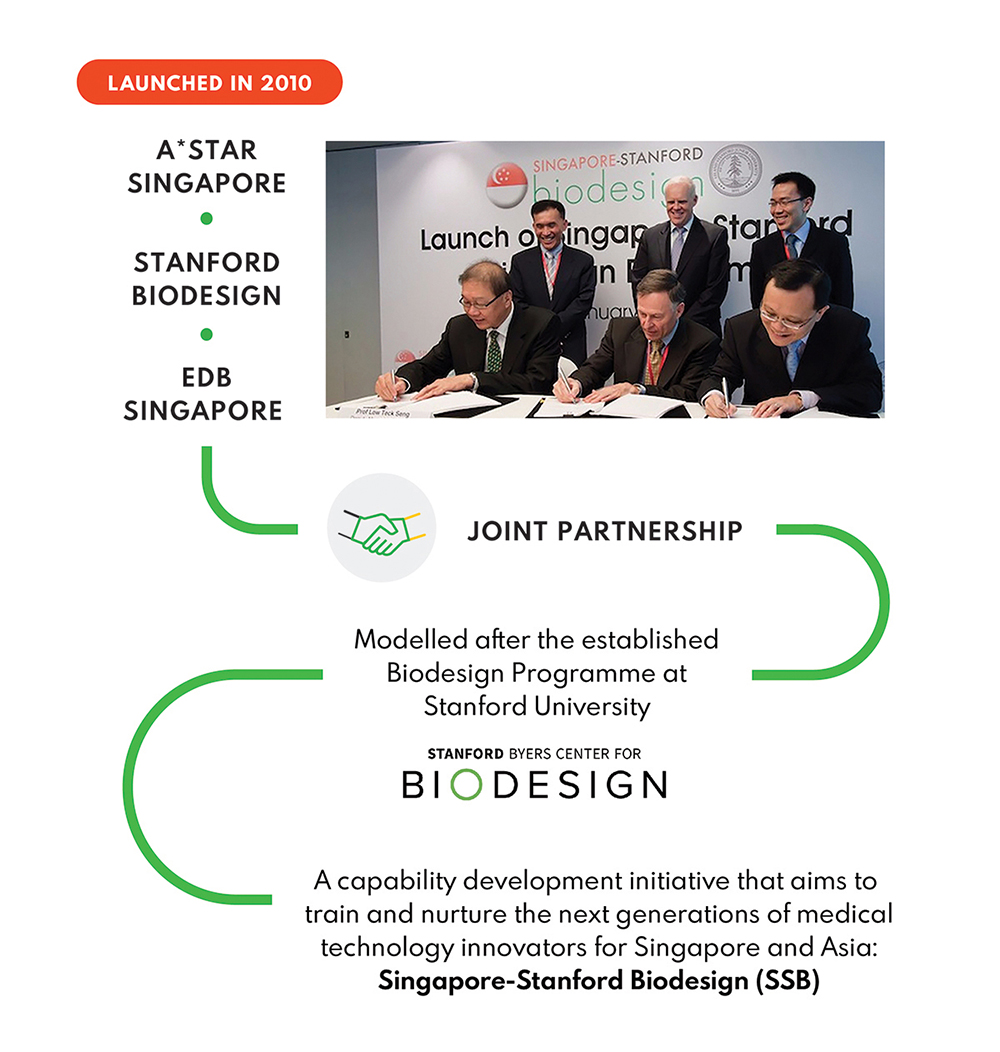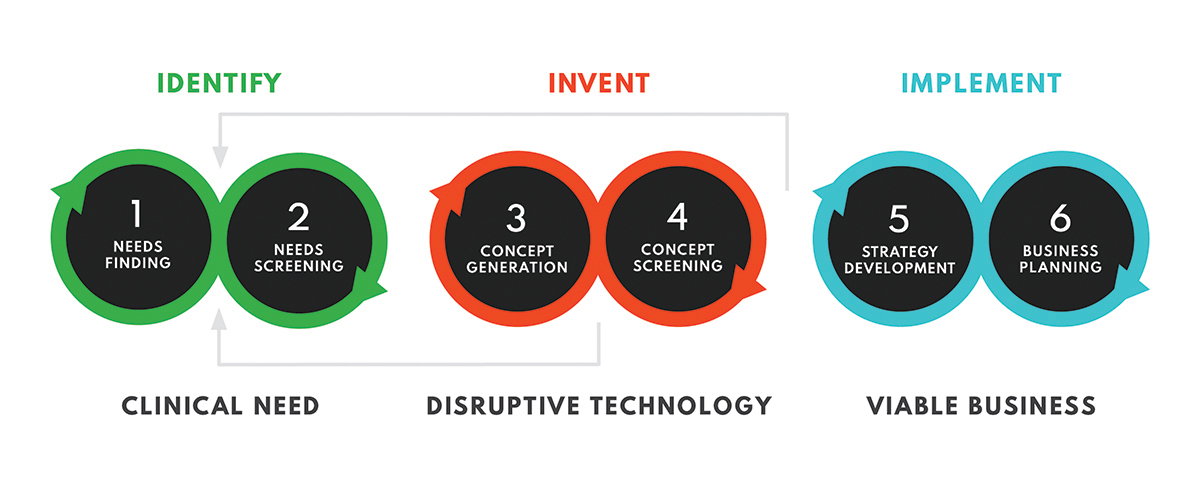Our History
Modelled after the established Biodesign Programme at Stanford University, Singapore-Stanford Biodesign (SSB) was launched in 2010 as a capability development initiative aimed at training and nurturing the next generation of medical technology innovators for Singapore and Asia for the then nascent ecosystem.

INTRODUCTION TO BIODESIGN
Stanford Biodesign was founded in 2000 and is a novel academic training program that combines a real-world, need-driven approach with an educational framework of collaboration among multi-disciplinary physicians and engineers, project-based learning and mentoring from experts across Silicon Valley.
Its curriculum (“The Biodesign innovation process”) provides a systematic approach to the identification of important unmet healthcare needs, the development of novel technologies to address them, and the subsequent development of business and commercialization plans to bring them into patient care.
The Biodesign Process

The Biodesign Process, Adapted from Biodesign: The Process of Innovating Medical Technologies, Yock P. et al.
To date, this robust methodology by the Stanford Byers Center for Biodesign has proven to be especially useful in creating a sustainable pipeline of talent, companies and impact for the US medtech ecosystem.
Stanford Byers Center for Biodesign continues to remain a joint program partner of the Singapore Biodesign programme, and plays a key role in ensuring the transfer of the pedagogical methodology that is continually updated to meet industry trends and real-world healthcare needs.

LAUNCH OF SINGAPORE BIODESIGN
As the medtech ecosystem matures, new challenges emerge as our nation strives to address impending healthcare needs and towards an innovation driven economy. As highlighted by the Committee for the Future Economy and Joint Steering Committee (JSC)’s on Medtech in 2018, there remains a requirement for talent trained in biodesign methodology to meet the growing ecosystem and industry’s needs in the following:
- Validation of local healthcare needs in relation to global market potential;
- Increasing throughput and quality of projects/spinoffs in an effort to secure commercial interest through R&D and investment dollars, and
- De-risking commercialization hurdles and accelerating spinoffs into the global market and/or towards healthcare adoption.

On 5 December 2018, SSB transitioned to Singapore Biodesign in a bid to become more Asia-centric, implementation-focussed and have increased ecosystem and industry relevance.
A*STAR celebrates International Women's Day

From groundbreaking discoveries to cutting-edge research, our researchers are empowering the next generation of female science, technology, engineering and mathematics (STEM) leaders.
Get inspired by our #WomeninSTEM


